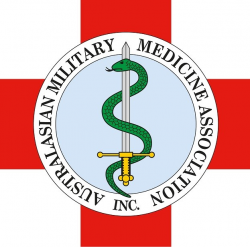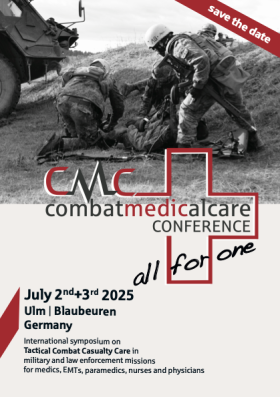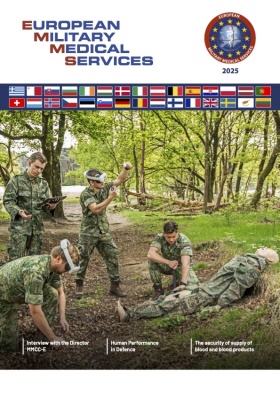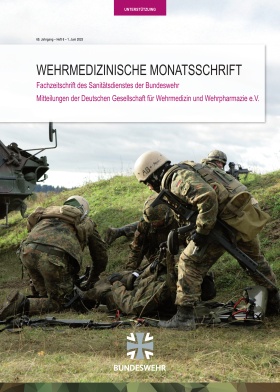
Almanac
Belgium, Kingdom of
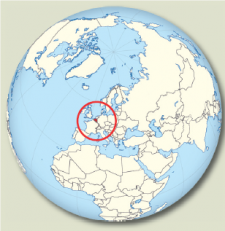
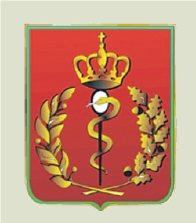
Belgian Medical Services Commander
Marc Ongena
Major General
Surgeon General
Director General of Health and Wellbeing (DG H&WB)
BELGIUM
Pictures and Graphics: Wikimedia Commons
Contact details:
Country author | |
Belgian Medical Services Commander | Major General ONGENA Marc |
Official address HQ | Eversestraat 1, 1000 BRUSSELS |
Contact details Public Affairs department | |
Website | De Medische Componentvan Defensie | Defensie |
Social Media | Facebook “Medical Component Be” |
HISTORY
Almost directly after the foundation of Belgium in 1830, a medical service was established. The need however was questioned severely during the first decades. It would cost Belgium more and it was considered as useless since all military units could perfectly use the existing medical (civilian) facilities. In case of a war the medical service was only in charge of evacuating victims from the battle field. The treatment was done by the Red Cross. Only after the First World War, the importance of a robust medical service became clear.
During the cold war, a structure of reserve hospitals, trains and other evacuation means was set up.
After the cold war, the medical service started to evolve to the structure which is nowadays still in place. Besides the political and international environment, restructurations and budget cuts had a strong influence on the further development. Several military hospitals were dismantled (the military hospital Queen Astrid is the only remaining military hospital).
NATIONAL CONTEXT AND SUMMARY
Overview and Geostrategic position
Belgium is located in the West Europe with around 30 000 square kilometres the country and 11,5 million inhabitants. His neighbour countries are France, The Netherlands, Luxembourg and Germany.
The official languages are Dutch, French and German.
The Kingdom of Belgium is a constitutional monarchy and a federal state made up of three Communities (the Flemish Community, the French Community and the German Community) and three regions. All these entities have their own legislative and executive bodies.
This small country has the opportunity to host the European Union (EU), the North Atlantic Treaty Organisation (NATO) and many other international institutions.
Organization of the Ministry of Defence and Armed Forces
Within Defence there are 05 components: Land, Navy, Air, Medical and Cyber.
ORGANIZATIONAL STRUCTURE
Organization of the medical Forces
The Military medical capabilities of the Medical Component are organized in three pillars:
- Operational pillar consisting of all medical capabilities directly contributing to the operational engagement of Belgian Defence and ensuring the continuum of care.
- Readiness pillar consisting of all capabilities contributing to the readiness of the medical capabilities as well as support to the readiness of the other Components. This includes the medical selection of new recruits and the medical evaluation and expertise to ensure that all military are medically fit to be deployed. There are also elements present to foresee medical Training and Education at all levels to all operational capabilities.
- Support pillar consisting of the Medical Component Command and the medical logistics, responsible for the acquisition, storage, maintenance and distribution of medical devices and items.
Missions of the Medical Component
The Belgian Medical Component has three missions.
- Medical support to operations: medical support during operations consists of providing medical care in accordance with the standards of care in Belgium, throughout the whole continuum of care, from care by the first responder, through specialised care by doctors and surgical teams, to tactical evacuation and up to the strategic evacuation of the wounded and sick to Belgium. This task is largely carried out by the operational units of the Medical Service with the support of the specialised staff of the Queen Astrid Military Hospital (MHQA) and the 5th Element for Medical Intervention (5 EMI) in Nivelles.
- Readiness of the medical units: this involves training and educating personnel of operational medical modules, both individually (basic medical training) and collectively (training of the full medical modules), tactically and medically, within Defence and in civilian training centres. This is the main task of the Medical Competence Centre and of the operational units of the Medical Service.
- Medical readiness of the military personnel: this includes everything the Medical Service does for the benefit of the armed forces, namely the medical evaluation during candidate selection, as well as the recurrent operational medical evaluation of all Defence personnel. The emphasis includes specific military occupations such as paratroopers, divers or pilots that require special medical tests. This is a mission largely carried out by the Queen Astrid Military Hospital (MHKA). In addition, Defence personnel from other armed forces also receive medical education and training specifically tailored to military operational conditions within our Medical Competence Centre.
Structure
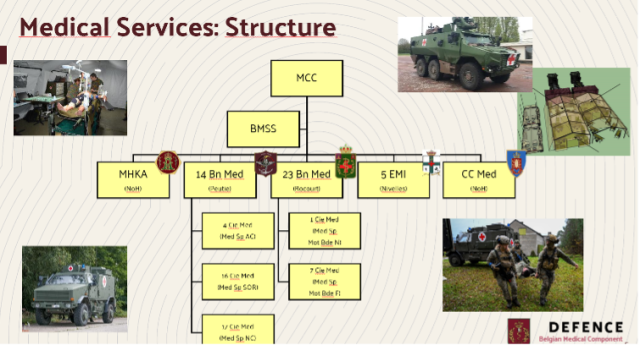
Source: Ministry of Defence Belgium
FIRM BASE HEALTH SYSTEM
The Belgian Medical Component is similar to the Land, Air and Naval Components and falls under the command of the Chief of Defence.
The Medical Component has five units each with a specific mission in accordance with the operational ambition.
14 Med Bn and 23 Med Bn are two medical operational battalions with subunits geographically spread across the country as close as possible to the units they support. These units consist of all the personnel and material resources required for the deployment of a Role 1 in direct support of their client’s missions and activities except for the specialized medical care providers who are employed within the Military Hospital. Each medical company in this battalion is mainly oriented towards needs and/or assets of medical support, such as aeromedical evacuation, medical support to the motorized brigade, to the special operations regiment, the naval force, etc.
5 EMI has been assigned the responsibility of the production, storage and distribution of medical equipment and supplies. It also contains the material and personnel for the Role 2 capability.
The Military Hospital Queen Astrid (MHQA, Role 4) on the other hand, provides a limited lying-in facility as well as an outpatient clinic for certain medical specialities medical imaging and laboratory services. It contributes to the regional emergency and disaster medical services system. The Military Hospital Queen Astrid also hosts certain medical niche capabilities including a burn Centre, a centre for hyperbaric oxygen therapy, a physiotherapy and rehabilitation unit, a centre for mental health care, the military centre for aviation medicine, the centre for medical fitness assessment etc. (see the section ‘Military Hospital’).
The Services has also a Medical Competence Centre (CC Med) for teaching both medical and combatant (non-medical) personnel, with the exception of the graduate and postgraduate education of all medical professionals (physicians, physiotherapists, veterinarians, nurses etc.) which takes place in civilian universities and medical schools. The Centre is collocated with the Military Hospital.
Finally, the Staff of the Medical Services (BMSS) is in the Queen Elisabeth Barracks near Brussels as part of the Belgian Defence Headquarters. BMSS is responsible for the organization and implementation of the military garrison and operational health care portfolio to the beneficiary Defence personnel. In addition to that is the medical staff responsible for the readiness of the medical capabilities.
Regional Medical Centres
The two medical battalions as described above have Regional Medical Centres covering all kinds of common medical services to the military on a national-territorial basis, including primary health care, dental care, pre- and post-travel medical advice, physiotherapy, pharmaceutical support and sanitation control (hygiene and water/food chain safety measures).
Military Hospital
The mission of the Military Hospital Queen Astrid is threefold:
- to hold medical capabilities in stand-by and to preserve and train medical skills, necessary to support operations in theatre as well as on the national territory;
- to contribute to the medical readiness of the deployable forces;
- finally, participate in homebase support operations with non-deployed capacities.
One of the main service objectives to achieve this mission is providing specialist medical care tailored to military duty. The Military Hospital is not a distinct hospital in the traditional sense but manages several specialized health care services in specific domains of military interest. That is why its activities are primarily focused on pre-hospital emergency care and disaster medicine (including CBRNe emergency ambulance), burn care, traumatology, (orthopaedic) surgery and rehabilitation, travel medicine, hyperbaric medicine, mental health care and crisis psychology. These hospital facilities are merely dedicated to the treatment of beneficiary active military and civilian Defence personnel. However, the burn care centre is a national centre of excellence, the centre for hyperbaric oxygen therapy and the emergency medical services, both integrated into the Capitals emergency and disaster relief system, are open to the public through cost refund. Especially in these three fields of expertise, the Military Hospital contributes to the context of aid to the nation.
Since, as a consequence, the Military Hospital is not a genuine general hospital, multilateral collaboration with civilian partners have become of utmost importance. In this way, the Military Hospital holds several partnerships with university hospitals in the neighbourhood and even provides to one of these, a part of its infrastructure. Besides, in the specialities not available in the Military Hospital, when necessary, Defence personnel will be referred to the civilian health care services and can get their costs reimbursed.
Since, consequently, the Military Hospital is not a genuine general hospital, multilateral collaboration with civilian partners have become of utmost importance. In this way, the Military Hospital holds several partnerships with university hospitals in the neighbourhood and even provides to one of these, a part of its infrastructure. Besides, in the specialities not available in the Military Hospital, when necessary, Defence personnel will be referred to the civilian health care services and can get their costs reimbursed.
Secondly, the Military Hospital holds an important role as a medical training facility to maintain skills and competencies tailored to military operational medicine and serves as a reach-back capability for the deployed medical forces. Moreover, the hospital is a key player when it comes to scientific research and development of innovative technology and treatment in certain niche activities that are of military concern such as infectious diseases, septic surgery, wound healing etc. The laboratory for molecular and cellular technology works closely together with several national and international (academic) partners and concentrates on the development of skin substitutes, on safety improvement of skin, on the molecular epidemiology of resistant microorganisms and on bacteriophage therapy. The laboratory for clinical biology, on the other hand, has been recognized as a national centre of reference for zoonotic diseases (Anaplasma).
Finally, and next to the ambition directly related to operations, the Military Hospital hosts a dedicated so-called centre for medical fitness assessment, that is in charge of the medical readiness preparation of all deployable Defence personnel: from the medical selection on enlistment to periodical fit-for-duty or operational fitness screening and disability evaluation during the entire professional career. This belongs to the expertise of several medical specialists working in the outpatient clinic of the hospital (ophthalmology, ENT, cardiology etc.), including the medical imaging department, the laboratory for sports medicine or the centre for aviation medicine. Physical rehabilitation through the ‘total force fitness’-program also contributes to this service objective.
MILITARY MEDICAL RESEARCH AND INNOVATION
Most of all the research projects take place in the military hospital. To give some examples:
Research within the domain of tropical medicine, blood, phage therapy, hyperbaric medicine, rehabilitation, clinical biology …
OPERATIONAL CAPABILITIES
Concept of deployment
The Belgian Continuum of care starts with first response at the point of Injury (POI) within 10 minutes. Then followed by a Forward Evacuation to the first Medical Treatment Facility (MTF), which can be a Role 1 or a Role 2 Medical Treatment Facility (MTF). At the Role 1 MTF an Emergency Physician can provide Damage Control Resuscitation (DCR) and from there the patient will be evacuated (Tactical Evacuation) to a Role 2 MTF. Damage Control Surgery can be provided in a Role 2 Forward and a Role 2 Basic MTF and General Surgery can be provided in a Role 2 Enhanced. From there the patient will be evacuated to his homeland with a Strategic Aeromedical Evacuation. Forward and tactical medical evacuation are currently mostly done by ground assets. Fixed Wing is on A400M. Next to this the process has been started to buy new light utility helicopters to perform forward and tactical aeromedical evacuation. State-of-the-art retrieval of the sick and wounded soldiers from the operational theatre completes this process of care. To that purpose, the Belgian Medical Component operates a dedicated strategic aeromedical evacuation program in close collaboration with the European Air Transport Command (EATC). Specialized assets include certified aeromedical crews and various types of patient transport units.
According to the political guidance, the mission of the Belgian Medical Services is to participate to joint medical support in the framework of EU, NATO or UN operations by filling either advisory or international staff positions, or either delivering Role 1, Role 2B and Role 2E capabilities conform and tailored to the activities, operations and level of ambition of the other Forces or independently on its own.
Missions
Belgian military medical teams contribute to several EU-, NATO- and UN-led operations worldwide providing medical support to Belgian contingents and multinational forces. Medical Services personnel are currently deployed with units serving in the Romania (FLF), Portugal (Falcon Vanguard) and Poland (EUMAM).
Previous overseas missions have included i.a. Lebanon (UNIFIL), ISAF- and RSM-theatres in Afghanistan and the Indian Ocean / Somalia Coast (ATALANTA).
Moreover, the Medical Services contributes to stand-by operations such as EUBG and NRF. The Medical Service support the difference Forces within their effort to ensure collective defence and to deterrence in the framework of DDA.
Finally, the last decade the Belgian medical military personnel systematically participated in several homeland Ops: after the terrorist attacks of 22nd of March 2016, the security operation, during the covid pandemic, the floods in the south of the country in 2021. Currently they are operational in guarding nuclear sites in Belgium as part of territorial protection.
MILITARY MEDICAL PERSONNEL
The Belgian Medical Component numbers approximately 1600 service members, of which 455 are medical officers. They are divided in different functions, such as physiotherapists, dental officers, general physicians and emergency physicians, veterinary doctors and pharmacists and medical support officers. A forceful recruitment campaign has to result during the coming years in a significant increase in this Medical Technical Corps. Beside the Medical Component, medical officers also serve in the Well-being staff department of the Belgian Armed Forces Command.
(status: 11. September 2025)
